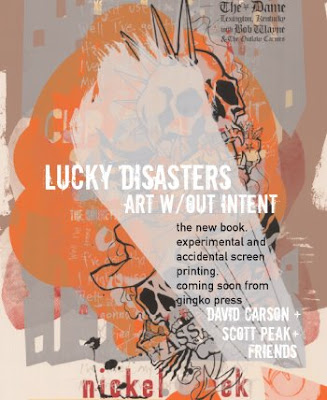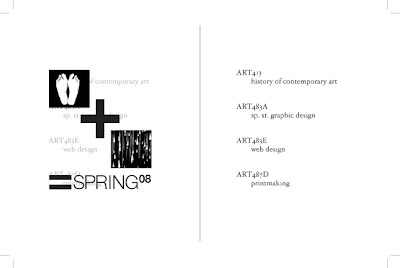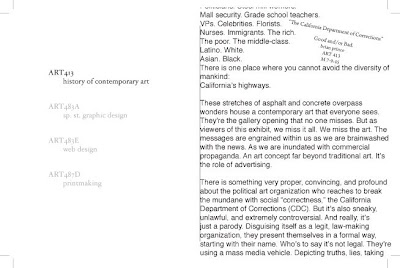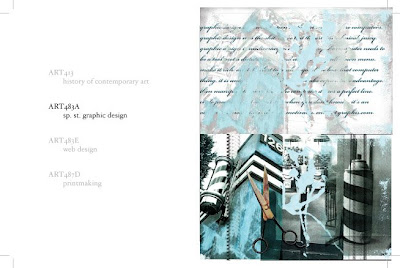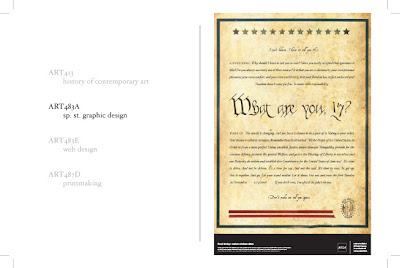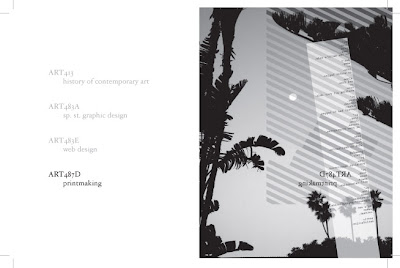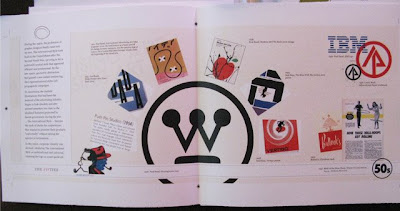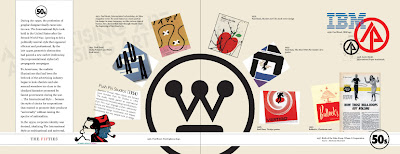i have my first solo show in january and it's going to be based around the thread that holds my being together: words. since the beginning of my career in graphic design i've been concepting with words. and now that my run as an MFA graphic design student nears its end, i want to explore my time in words. there will be more than words in the show, including experiments with montage, the roller poem and the flicker machine strobing mad ambiance, but what it comes down to is what i see myself as – a word lover, as i've always believed: 1 word presents 1000 images in my head.
january 19, 2010 is set for the opening but the ideas are still brewing. it will be in the Center Gallery of the Titan Student Union at Cal State Fullerton which is a pretty small gallery, but will be nice and intimate with the dreamachine as the centerpiece.
the working title is
CUT-UP: Words Are Image, but very well may end up as
ONE WORD PRESENTS A THOUSAND IMAGES. there will definitely be a handful of poems i've written. and i may feature a cut-up and/or visually stimulating works from a couple other artists.
- - - - -
from my proposal:
At a surrealist rally in the 1920s Tristan Tzara, the man from nowhere, proposed to create a poem on the spot by pulling words out of a hat. A riot ensued wrecked the theater. André Breton expelled Tristan Tzara from the movement and grounded the cut-ups on the Freudian couch.

A poem encourages, if not forces, one to focus on imagery, theme, and associative relationships, rather than on chronological causal structures as found in a novel or longer works of literature.
In the summer of 1959 Brion Gysin, painter and writer, cut newspaper articles into sections and rearranged the sections at random, formalizing the cut-up method bringing the collage to writers, which has been used by painters for fifty years. Writers will tell you that often their best works are accidents and manifest out of a stream of consciouness that cannot be explained. The best writing seems to be done almost by accident, but for writers, until the cut-up method became explicit, all writing is in fact cut-ups. You cannot will spontaneity. But you can introduce the unpredictable spontaneous factor with a pair of scissors. (my first experiment
://here)
Graphic Design is, by nature, completely planned mainly because the end result must be universal and legible. but i don't think the process has to be...
William S. Burroughs, who is most know for this process said,
“The cut-up is actually closer to the facts of perception than representational painting. Take a walk down a city street and put down what you have just seen on canvas. You have seen a person cut in two by a car, bits and pieces of street signs and advertisements, reflections from shop windows - a montage of fragments. Writing is still confined to the representational straitjacket of the novel ... consciousness is a cut-up. Every time you walk down the street or look out of the window, your stream of consciousness is cut by random factors.”The cut-up is a mechanical method of juxtaposition in which Burroughs literally cuts up passages of prose by himself and other writers and then pastes them back together at random. This literary version of the collage technique is also supplemented by literary use of other media. Burroughs transcribes taped cutups (several tapes spliced into each other), film cutups (montage), and mixed media experiments (results of combining tapes with television, movies, or actual events). Thus Burroughs’ use of cutups develops his juxtaposition technique to its logical conclusion as an experimental prose method, and he also makes use of all contemporary media, expanding his use of popular culture.
The cut-ups can be applied to fields other than writing. Dr. Neumann in his Theory of Games and Economic Behavior introduces the cut-up method of random action into game and military strategy: assume that the worst has happened and act accordingly. If your strategy is at some point determined . . . by random factor your opponent will gain no advantage from knowing your strategy since he can not predict the move.
The cut-up method could be used to advantage in processing scientific data. How many discoveries have been made by accident? We can not produce accidents to order. The cut-ups could add new dimension to anything — film, photography, ceramics, writing, and even graphic design. There is no reason to accept a second-rate product when you can have the best. And the best is there for all. “Poetry is for everyone.”
The word is image and this will be an exhibit of image and theme, mainly through the cutting and reforming of words.
My thesis will consist of the my own personal explorations of Burroughs’ and Gysin’s experimental ideals. This exhibit is an introduction to those explorations with hopes of finding a new purpose and place for graphic design in the cut-up arena.
- - - - -
i'm excited to finalize the details in the fall. but for now, summer will be spent with the family on the road...







